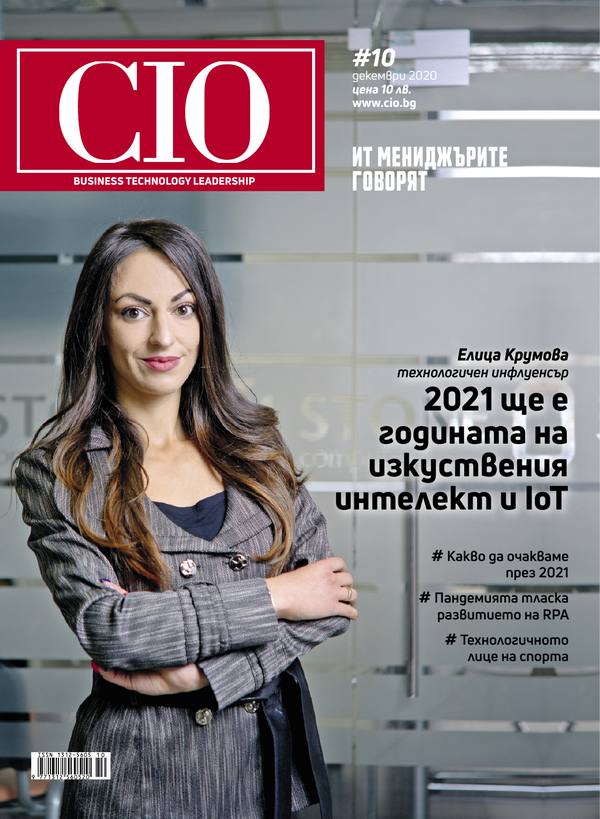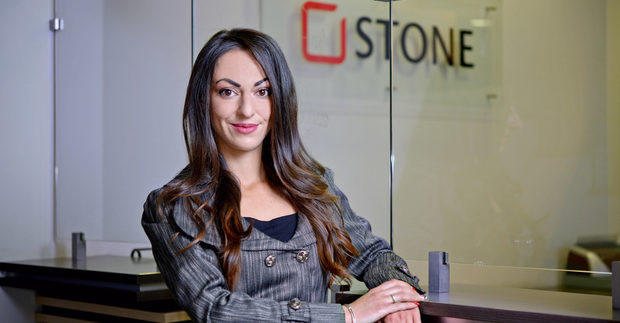
This is an interview with me published in CIO.bg and CIO Magazine BG (Issue #10, December 2020).
The original interview can be found here:

Which are the technologies and tech trends in 2020 whose development you would distinguish?
There are not many surprises in the list of technologies and tech trends which marked 2020, although there are some changes in their positions. As expected, the top 3 technological trends remain the same, but there are some internal swaps. At the same time, if we expand the focus and consider the top 10, we will see that there are technologies which were not included there in 2019, while others that were part of this elite group, had dropped out of the ranking. All these changes are the natural result of the situation, created by COVID-19 and the measures to restrain the pandemic globally and, in particular, the changes in the consumers’ needs, the markets and the shift of the focus towards new economic, commercial and technological demands. In connection with these changes, the list of technologies and tech trends currently looks like this – Artificial Intelligence, 5G, Internet of Things, Biometrics, augmented and virtual reality, blockchain, robotics, Natural Language Processing (NLP) and quantum technologies.
Despite being outside of these leading positions, some technologies like personalised medicines, anti-aging medicines, telemedicine, genetic medicine, computerised vision, digital twins and space technologies had a remarkable progress in 2020.
To what extend did the development of different technological industries and markets meet the analysts’ expectations? Which were the biggest surprises?
The events in 2020 pushed forward certain technologies, while others, surprisingly, receded into the background. For me personally, the most surprising change was the drop out from the top positions of the IT technologies, although, considering the extreme events during last year and the changed needs of humanity in technological aspect, this process is utterly natural. Last year, a more tangible boom of IoT technologies in daily life, transport, logistics, manufacture and infrastructure was expected. However, in 2020, the application of IoT was directed to a much greater extend towards the field of healthcare and medicine, in aid of diagnostics and prediction of events concerning the human body.
Due to the specifics of the year, the consumers’ IoT found an exclusive application as a rise in the demand for smart devices and an increase of the market share of the sector in general is observed. The tendency is expected to continue in the following years.
In general, the events in 2020 led to shifts in the list of top technologies. These changes could not have been predicted by analysts in 2019, since the appearance of the virus and its consequences could not have been taken into account. The technological markets continued their planned development, but in the context of the global situation some minor to medium changes were observed in certain industries. It can be concluded that the technological industry remains the least affected by the appearance of COVID-19, especially when compared with some other sectors which experienced much worse effects.
COVID-19 has changed everything. What effect is the pandemic expected to have on the various technological niches in 2021? Which trends will remain hot and which will cool down?
In view of the changes in top 3 of technologies between 2019 and 2020 (in 2019 the list comprised of IoT technologies, AI and 5G), I consider that in 2021 the names in this list will remain the same. Meanwhile, it is expected that certain technologies will be again repositioned in top 10, owing to external factors and global events which can move them forward due to the changed needs for different functionalities. The huge market growth of AI in healthcare and IoT devices was a surprise in 2020. Of course, this move was mainly caused by the needs arising from the pandemic and the search for innovative solutions in the fight against the new coronavirus and its consequences. I expect that in the following years the interest in IoT devices with AI will increase, especially in healthcare, pushing slightly aside the impetus for incorporation and versatile use of such devices in our daily lives, as it has been predicted before. However, the very top position that AI took this year is fully deserved because of its role in the development of other technological trends, as well as in building up new healthcare instruments.
The second position that 5G took in 2020 is completely logical, considering, on the one hand, the potential of this technology for changing the technological landscape of the world, and, on the other hand, the fact that this technology is still to develop and unfold its full capacity for the transformation of areas like production, transport, and etc.
COVID-19 lead to the drop out of technologies such as drones and 3D printing from the top 10 list, which, I expect, will remain a tendency in 2021 as well. Their positions were occupied by technologies which are much more helpful in the fight against the pandemic, namely Natural Language Processing (NLP) and Quantum Computing. It should be noted that even before the pandemic Natural Language Processing (NLP) had an increasing role for the satisfaction of consumer experience through optimisation of customer services. However, in 2020 it started being applied in solutions of the suddenly changed circumstances concerning the workforce. During that year, Biometrics was also moving forward due to its various applications in healthcare.
In 2020, analysts were also observing with excitement the fast development of augmented and virtual reality, mainly in the fields of training, education, diagnostics and the entertainment industry. For me, these technologies are extremely important for the field of education, since they have the capacity to change positively the features and structure of educational processes.
The most important challenge that the CIOs will face in 2021 will be related to their ability to speed up the digitalisation of their organisations, while considering the unpredictability of the situation, leading to pitfalls in planning. It is the uncertainty that will shape the scene of top technologies in 2021.
I expect that the top 3 technologies will remain the same (not necessarily in this order), but AI will be much closer linked to ethical issues. We will witness changes in the requirements for the ethics of AI, since currently a lot of organisations are working on this topic.
I anticipate that robot process automation will be positioned immediately after the top 3, because it is connected with the development of Industry 4.0, as well as with cybersecurity, which has become vital due to the increasing number of IoT devices and remote work.
Last but not least, I expect growth of interest in cloud native technologies, more concrete discussions for 6G and anticipatory analysis.
What influence did the sharply changed situation have on the different types of technological companies (start-ups, technological giants, and so on)? Which managed to find their way faster and won and which lost?
Generally, in such times of crisis which has the potential to transform the structure of the world and the society, we remember that in Chinese the word ‘crisis’ is composed of two characters, one representing danger and the other, opportunity. In the light of this, during the current crisis a lot of technological companies managed to find opportunities.
The giants took advantage of their potential and found new applications of already existing products. Such examples are Zoom and Microsoft Teams, without which no one can now imagine collaborative work and education. At the same time, a lot of start-ups, which by nature are more flexible and adaptable, managed to occupy their niches, which means that times have come when both the giants and the smaller players depend to a great extent on their flexibility.
Analysts also observed an interesting tendency for cooperation between start-ups and giants during the previous year, and the situation in 2020 intensified this trend. Utilising this model, the start-ups can aid the big companies to adapt faster and more creatively to the new modes of work and to present innovative technologies and business processes. This will support the digital transformation of businesses and the application of the standards of Industry 4.0. COVID-19 definitely made the majority of the industries to realise the need for complete transformation.
You also have a solid expertise in the field of marketing and advertising. How has the consumer behaviour changed and how should companies adapt their strategies to respond to this change?
Certainly, the best tactics in times of crisis is constant testing, consumers’ feedback, and, in general, communication with them. For example, the first lockdown in the spring of 2020 demonstrated the importance of online commerce, which even in Bulgaria increased many times. Users gained experience and confidence in this type of trade and even small businesses and merchants have been trying to respond to the increased demand.
Public opinion researchers throughout the world have reported that the Internet and social networks are mainly used for search and research. The increase of the demand for direct online communication with the brands is a trend for users of all ages. That is why companies should strengthen their channels of online commerce and continue the process of their digitalisation. It is of utmost importance as well that the brands offer and update their services in any point of presence, which will improve their integrity. This process is closely linked with constant analysis of the effects of the current strategies, experiments, changes, and again analysis until the marketing efforts are channelled into the best direction.
Can this lead to an enhanced role of companies like Facebook and Google and will this increase the tension between the business and them?
The tension will most probably increase but it should be taken in account that it was spurred by the consequences of COVID-19 as well, when in this unusual situation we witnessed the increasing political tendency for tightening the regulatory measures against the technological giants. It will remain as a trend, although I anticipate a more precautious approach by marketers. They will be in standby, waiting to see how the present legal disputes will develop, which will decrease the number of paid campaigns in social networks. The best strategy for marketers in 2021 is to rely on original generic content and constant close liaison with their clients.
If we take a more global perspective, how has this dizzying technological development in the last 10 years affected the mankind as a whole? The positives are widely discussed but are there any negative sides?
Human beings are becoming increasingly dependent on computers and technologies. We already cannot even imagine our daily lives without them. The negative consequences are often pointed out by specialists – isolation, disturbed sleep, depression, and so on, but, in my opinion, the most negative consequence is intellectual laziness. It is too easy to find the answers to any questions because they are just at a click distance, but this deprives people of intellectual challenges. Humankind should direct its attention towards development tools like life-long learning and improving emotional intelligence.
In the era of AI and development of chips which can be implanted in humans, where should the boundaries be put? What is the place of ethics in the development of technologies?
The positive examples of the use of technology in medicine, for example, are well known. These examples demonstrate how the ethical use of AI and chips can help the humanity. However, when privacy, integrity and human rights are concerned the boundaries should be strict. Not surprisingly, specialist are differentiating a whole new branch in science, called AI Ethics, which is divided into two subtypes – ethics of AI developers and ethics of the machines. The leading moral and ethical basis should be personal freedom, personal integrity and the right to free choice.
Technology is considered a men’s world. How can a woman succeed in it?
It is a fact that in the most prestigious rankings women are fewer than men, which proves that for us it is still more difficult. For example, there are only 2 women in the top 10 positions of Top 100 Thought Leaders and Influencers Division of IoT Premier League. This fact reveals that it is more difficult for women to gain recognition, although we witness that the status quo is rapidly changing during the last years. I expect that this trend will continue.
What is the responsibility of being one of the top tech influencers?
The main responsibility of each influencer is to analyse and understand in the best possible way the trends in order not to mislead their audience. Of course, it depends on the sphere, but in that of emerging technologies the influencer should be an unofficial control body between companies which develop products, regulatory authorities and the other participants in the ecosystem. It is important that influencers should be able to trigger discussions and constructive criticism in direct dialogue with companies, regulators and consumers. The entire technological development should happen thoughtfully and in complete transparency in order to serve the whole humanity. That is the ethical role of technological influencers.
